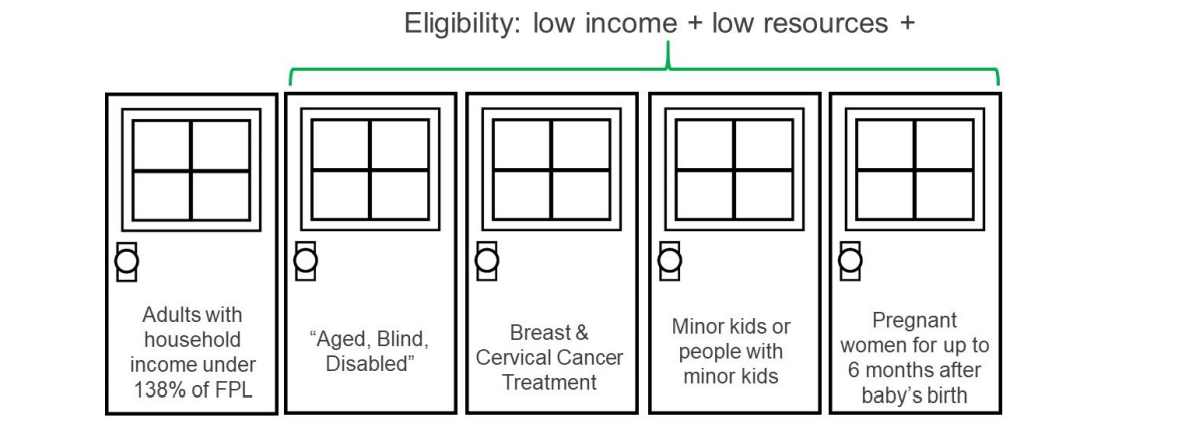How to Qualify
In all states, Medicaid is available to people with a low income, low resources, and meet a specific category of eligibility. Those categories are different in each state, but usually include:
- Children
- Pregnant women
- Seniors, and
- People with disabilities who are receiving Supplemental Security Income (SSI).
Resources are things like money in a bank account or retirement account, like a 401k plan.
These different categories of eligibility are like different doors into the Medicaid program. Some doors require that you have a low income and resource level, while the Medicaid expansion door only requires that you have a low income.
States may have different rules on what income level you must have to get in certain doors. For example, if you have a disability, you may need to have an income level below 100% of the federal poverty level (FPL). If you are a child, your family income may need to be below 250% of the FPL.
States may also have their own special doors to get into the Medicaid program. For example, Minnesota and New York also give individuals with a household income between 138-200% FPL access to Medicaid through the Basic Health Program.



